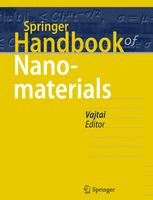

Most ebook files are in PDF format, so you can easily read them using various software such as Foxit Reader or directly on the Google Chrome browser.
Some ebook files are released by publishers in other formats such as .awz, .mobi, .epub, .fb2, etc. You may need to install specific software to read these formats on mobile/PC, such as Calibre.
Please read the tutorial at this link: https://ebookbell.com/faq
We offer FREE conversion to the popular formats you request; however, this may take some time. Therefore, right after payment, please email us, and we will try to provide the service as quickly as possible.
For some exceptional file formats or broken links (if any), please refrain from opening any disputes. Instead, email us first, and we will try to assist within a maximum of 6 hours.
EbookBell Team

0.0
0 reviewsThe Springer Handbook of Nanomaterials covers the description of materials which have dimension on the "nanoscale". The description of the nanomaterials in this Handbook follows the thorough but concise explanation of the synergy of structure, properties, processing and applications of the given material. The Handbook mainly describes materials in their solid phase; exceptions might be e.g. small sized liquid aerosols or gas bubbles in liquids. The materials are organized by their dimensionality. Zero dimensional structures collect clusters, nanoparticles and quantum dots, one dimensional are nanowires and nanotubes, while two dimensional are represented by thin films and surfaces. The chapters in these larger topics are written on a specific materials and dimensionality combination, e.g. ceramic nanowires. Chapters are authored by well-established and well-known scientists of the particular field. They have measurable part of publications and an important role in establishing new knowledge of the particular field.